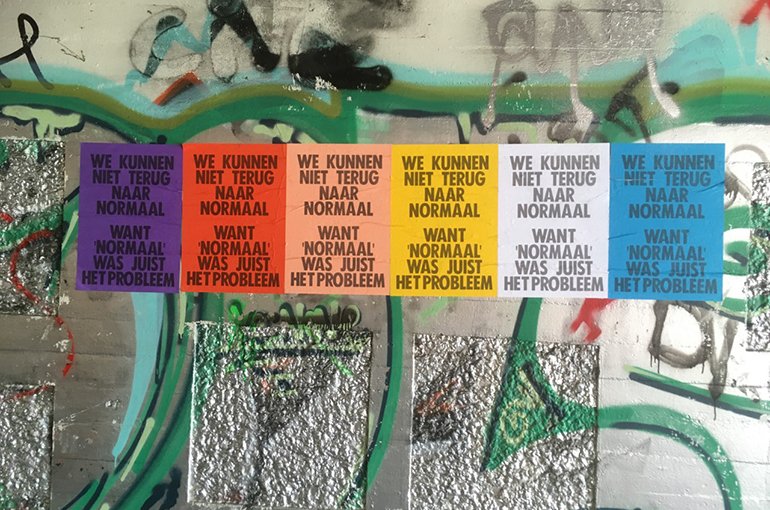Thinking with the Virus
A contribution by Prof. Birgit Meyer, professor of Religious Studies

A contribution by Prof. Birgit Meyer for the Gender, Diversity and COVID-19 platform. The platform offers a series of short blogposts in which we invite different Hub members and researchers to share their findings, insights and reading tips on issues of inclusion and exclusion related to the Corona crisis.
Obliged to work from home since mid-March, initially I felt somewhat paralyzed, while struggling to finish pending things with regard to teaching via digital means. But I soon realized that “Corona” – by which I mean the scary spread of the virus as well as all the measures taken to prevent it – is not merely a medical issue, but also a social-political one that calls for a thorough, critical diagnostics.

The fear of viruses
In the humanities there is a long strand of critical scholarship (Mary Douglas, Susan Sontag, Michel Serres, Sybille Krämer) that analyzes the fear of viruses and infection in modern societies, and the political use of virological metaphors with regard to Others who are suspected to endanger the “body” of the nation. These anxieties are also mobilized regarding the Coronavirus. In the current situation in Europe migrant workers and refugees do not receive appropriate protection against the virus, while at the same time members of these vulnerable groups are framed as potential transmitters.
Politics of exclusion
The use of the figure of the virus and body metaphors in politics of exclusion is an important focus for critical research in the field of gender and diversity. But the virus is also “good to think with” as it alerts us to the so far widely neglected fact that infection is part and parcel of global entanglements, implying the precariousness of corporeal boundaries and the permeability of the self. Far from being secluded, buffered monads that stand above and are able to master the world, as the ideology of the modern self suggests, we are relational, permeable beings. As such, as the spread of the virus painfully reminds us, we are affected by forces we cannot see with our naked eyes nor fully control.
Corporeal entanglements
Humans are deeply entangled with each other, as well as with other living and dead matter
Certainly, “Corona” affects people in a highly differentiated manner that mirrors existing inequalities within societies and across the globe. But the insight that humans are deeply entangled with each other, as well as with other living and dead matter certainly is a productive starting point for a critical analysis of these inequalities. The arrival of the virus in our midst prompts us to rethink our terms of scholarly analysis from the angle of corporeal entanglements, infection and the possibility of immunization – and for this, of course, our scholarship on intersectionality and diversity is a productive starting point.
Dossier corona
Especially in the sphere of religion, such models of selfhood and sociality, as well as experiences of affliction and suffering, are being spelled out. As a sphere in which people express fears about permeability and experiences of vulnerability, religion forms a viable, living archive in which the cultural memory of earlier pandemics is stored. With our Dossier Corona launched as part of our research project Religious Matters in an Entangled World, we document the ways in which “Corona” is apprehended in different parts of the world from a religious angle. In so doing, we seek to contribute to the much-needed critical diagnostics of our current, highly entangled world.
Normal was the problem
“Corona” is not simply a temporary crisis that we will leave behind and forget so as to move back to normality. These days during my walks in my neighbourhood, over and over again I see posters stating: “We kunnen niet terug naar normaal, want ‘normaal’ was juist het probleem” (“We cannot go back to normal, because ‘normal’ was the problem”). There is a lot of reflection going on about what is taken as “normal”, and how the world “after Corona” could look like. This reflection must be extended to our scholarly epistemologies, well beyond the pockets of critical scholarship of which the “Hub Gender & Diversity” is also part. Thinking not only about, but also with the virus is a promising way to embark on this endeavour.

